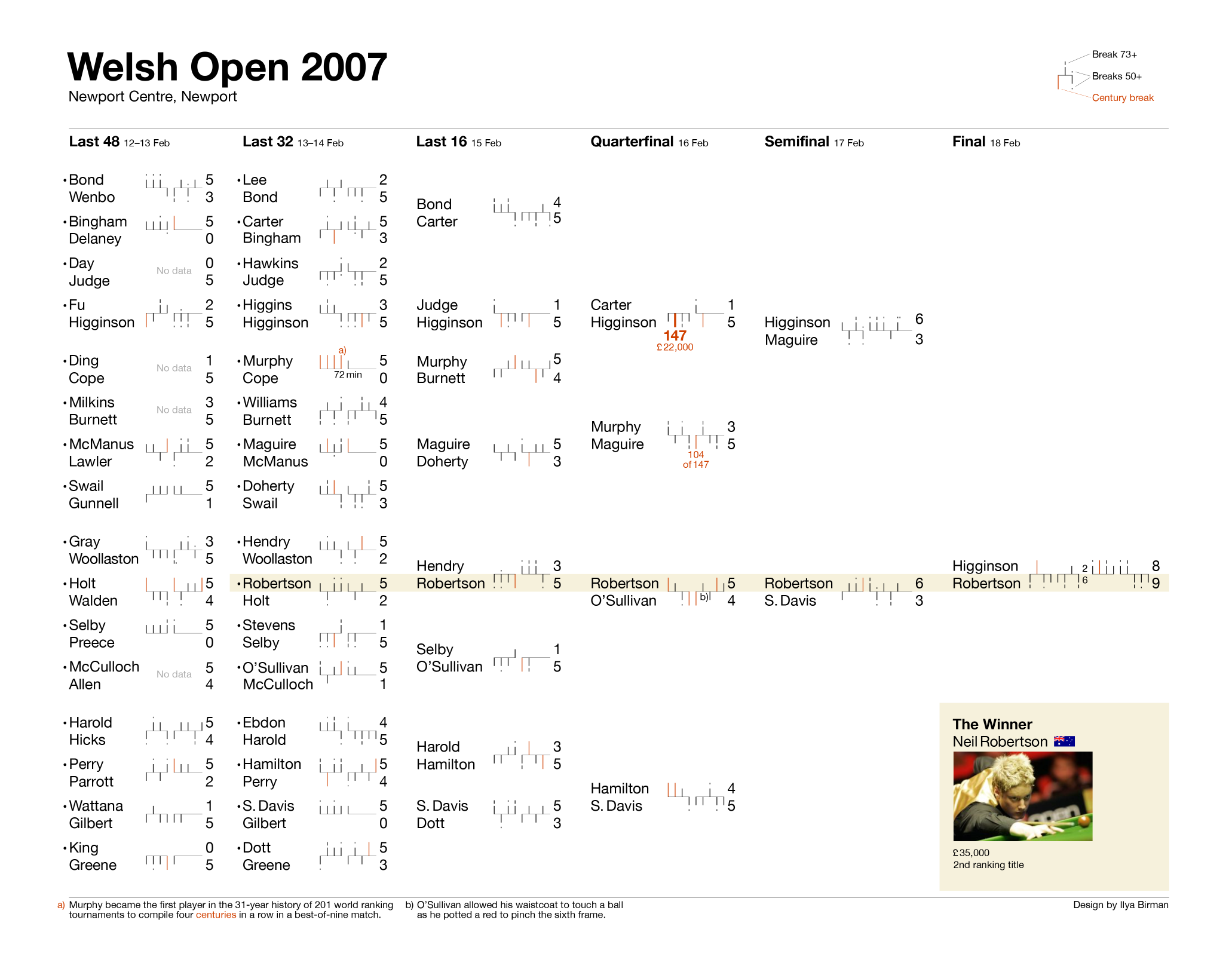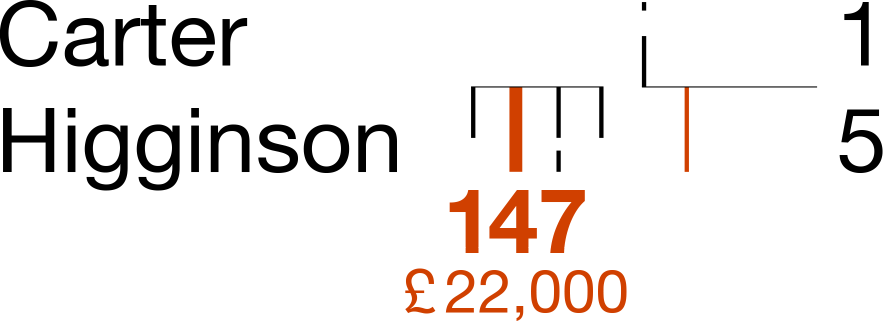Snooker is a sophisticated cue game. The players score points by potting the balls in a certain order. Points are also awarded when one’s opponent commits a foul. A player can provoke an opponent’s foul by making a snooker — a situation when it is particularly hard not to fail. The higher score wins.
Below is a way to display the flow and the results of a snooker tournament:

The matches
One game of snooker is called a frame. A snooker match consists of a number of frames. Here, the matches are represented by sparklines which show the results and the main features of each frame:

Long matches are split into sessions of up to eleven frames. The sessions have a fifteen-minute interval after the first four frames. Horizontal lines and intermediate scores display this structure. In this tournament, the only match that required more than one session was the final. It was not decided until the last frame:

A break is a number of points scored in one visit to the table. Though how the points are scored plays no role in the result, higher breaks indicate higher game quality (and are fun to watch). The breaks of 50 or higher

Devastating victories look devastating:

The maximum
147, or a maximum is a break of all balls potted in the most effective order. Maximums are scarce, so they deserve a special mark:


The draw
The dots • indicate the point in the tournament where a particular player was seeded:

The sparklines of each match are arranged to form the tournament draw. But they are not centered relative to the matches of the previous stage.

Instead, they are aligned by winner:

With this display, you instantly see who and how any player won on his way through a tournament, up to the stage where they lose:
